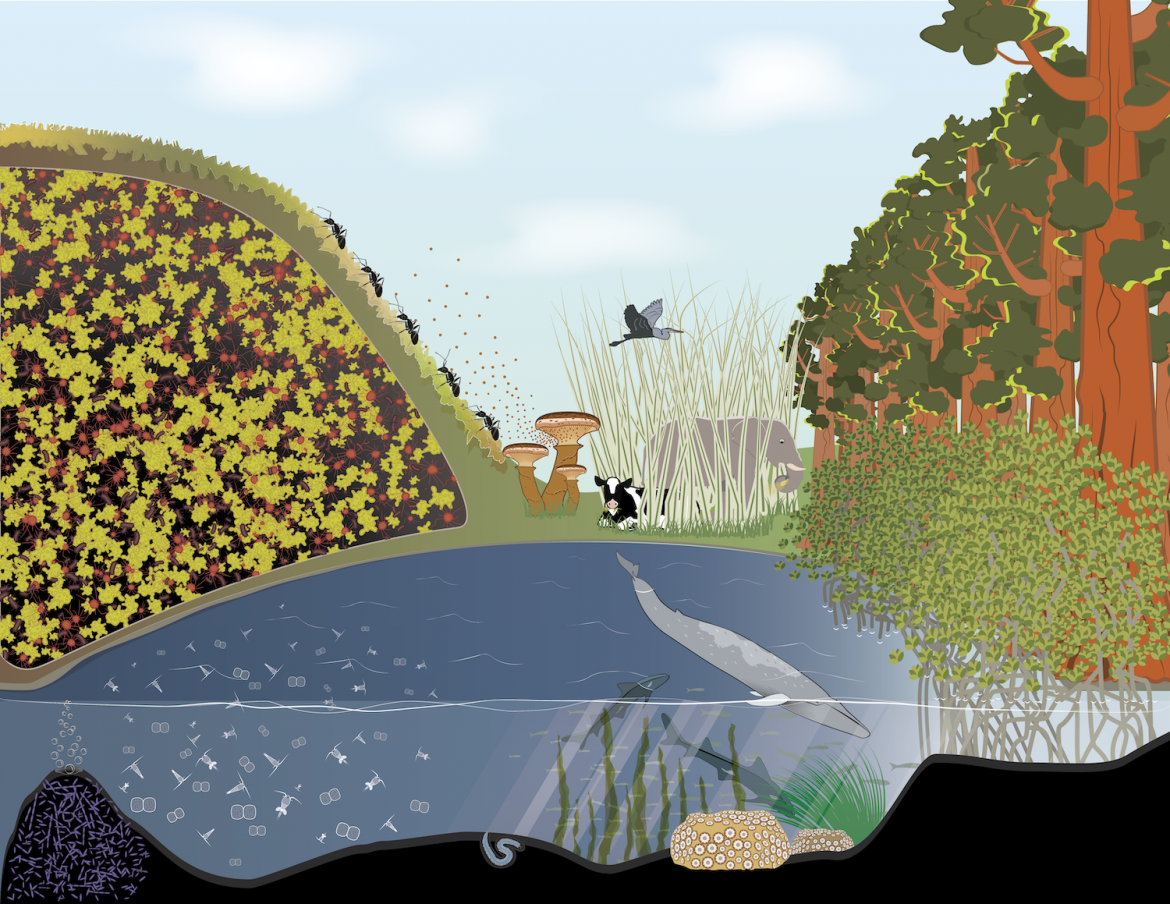
"Life comes in all shapes in sizes, but some sizes are more popular than others, new research from the University of British Columbia has found.
In the first study of its kind published today in PLOS ONE, Eden Tekwa, Mary O’Connor and Anna Bazzicalupo at UBC Zoology with Katrina A. Catalano and Malin L. Pinsky, conducted the study, surveyed the body sizes of all Earth’s living organisms, and uncovered an unexpected pattern. Contrary to what current theories can explain, our planet’s biomass—the material that makes up all living organisms—is concentrated in organisms at either end of the size spectrum..."
UBC News, Mar29, 2023: Earth prefers to serve life in XXS and XXL sizes: UBC research
____________________
Abstract
Recent research has revealed the diversity and biomass of life across ecosystems, but how that biomass is distributed across body sizes of all living things remains unclear. We compile the present-day global body size-biomass spectra for the terrestrial, marine, and subterranean realms. To achieve this compilation, we pair existing and updated biomass estimates with previously uncatalogued body size ranges across all free-living biological groups. These data show that many biological groups share similar ranges of body sizes, and no single group dominates size ranges where cumulative biomass is highest. We then propagate biomass and size uncertainties and provide statistical descriptions of body size-biomass spectra across and within major habitat realms. Power laws show exponentially decreasing abundance (exponent -0.9±0.02 S.D., R2 = 0.97) and nearly equal biomass (exponent 0.09±0.01, R2 = 0.56) across log size bins, which resemble previous aquatic size spectra results but with greater organismal inclusivity and global coverage. In contrast, a bimodal Gaussian mixture model describes the biomass pattern better (R2 = 0.86) and suggests small (~10−15 g) and large (~107 g) organisms outweigh other sizes by one order magnitude (15 and 65 Gt versus ~1 Gt per log size). The results suggest that the global body size-biomass relationships is bimodal, but substantial one-to-two orders-of-magnitude uncertainty mean that additional data will be needed to clarify whether global-scale universal constraints or local forces shape these patterns.